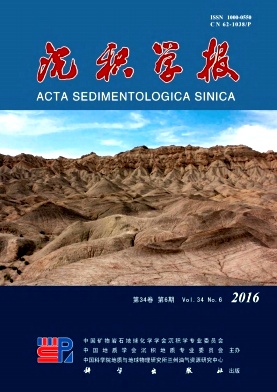Net Primary Productivity and Its Control Factors of Early Cretaceous Peatlands:Evidence from No.6 Coal in the Jiegalangtu sag of the Erlian Basin
doi: 10.14027/j.cnki.cjxb.2016.06.006
- Received Date: 2016-03-14
- Rev Recd Date: 2016-05-23
- Publish Date: 2016-12-10
-
Key words:
- peatland /
- Milankovitch cycle /
- carbon accumulation rate /
- net primary productivity (NPP) /
- deep time /
- Early Cretaceous
Abstract: Peatlands contain a huge amount of carbon whose productivity will affect the global carbon cycle and even climate change. A number of productivity researches have been done on the Holocene peats, but few is dealing with the pre-quaternary due to a lack of precise dating method. In this paper, the geophysical logging signals were used to analyze the Milankovitch orbital cycles which were further used as a tool to date the "deep time" and to measure the carbon accumulation rates of the paleo-peatlands. The spectrum analysis has been conducted on the geophysical logging signals of a thick coal (No.6 seam) of the Early Cretaceous in the Jiergalangtu sag of the Erlian Basin, and the Milankovitch cycle parameters of 123 ka (eccentricity):38.1 ka (slope):22.1 ka (precession) have been obtained for this coal. These Milankovitch cycles were used as "measurement" to calculate the carbon accumulation rate and the net primary productivity (NPP) based on the carbon contents and coal rank of coal. The No.6 coal had a carbon accumulation rate of 35.1~38.9 g C/(m2·a) which corresponds to the carbon accumulation rate of 46.2~51.2 g C/(m2·a) and the net primary productivity (NPP) of 231~256 g C/(m2·a) for the Early Cretaceous peatlands. A comprehensive comparison with the productivity levels of the Holocene peatlands (NPP) of 150~250 g C/(m2·a) in the same latitude confirmed that the productivity level in the Early Cretaceous peatlands were controlled by paleo-temperature and concentration of carbon dioxide in the atmosphere. As the paleotemperature and concentration of carbon dioxide were closely related to the paleoclimates, these productivity values of the paleo-peatland would help us understand more about paleoclimates of "deep time".
| Citation: | YAN ZhiMing, SHAO LongYi, WANG Shuai, Large D J, WANG Hao, SUN QinPing. Net Primary Productivity and Its Control Factors of Early Cretaceous Peatlands:Evidence from No.6 Coal in the Jiegalangtu sag of the Erlian Basin[J]. Acta Sedimentologica Sinica, 2016, 34(6): 1068-1076. doi: 10.14027/j.cnki.cjxb.2016.06.006 |






 DownLoad:
DownLoad: